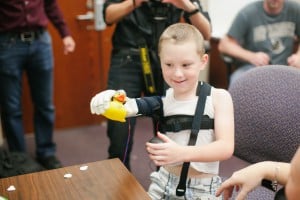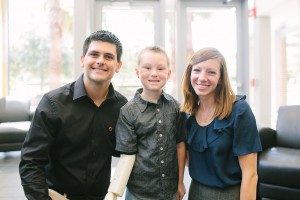I am convinced we live in an ever shrinking world. Following my bachelor’s degree in Aerospace, Aeronautical and Astronautical Engineering at the University of Central Florida (UCF), my research professor, Dr. Seetha Raghavan, gave me an incredible opportunity to participate in my first international experience. Just a few weeks later I landed in Köln, Germany, for a 10-week exchange with the German Aerospace Center (DLR). As my first experience immersed in a new culture, my entire view of the world was changed. Our collaboration developed to produce cutting edge research for jet engine blade protective coatings, using X-Rays to look inside the materials while replicating the extreme environments inside the fiery engine.
After earning my master’s degree in Engineering in Aerospace (MSAE), Aerospace, Aeronautical and Astronautical Engineering in 2014, I found myself facing a similar opportunity. Just eight weeks after my graduation and wedding, my wife and I arrived in Frankfurt for our yearlong adventure. The challenge was clear: the Fulbright Program was designed to encourage global innovation and mutual understanding. Learning these skills has proved immensely valuable for my research, but also for my personal life.

Alex Pring first tries his new bionic arm. Photo Credit: KT Crabb Photography
What I learned in the process is that global innovation and collaboration should continue outside normal business hours. Just days before arriving in Germany, my summer project of building a 3D printed bionic arm was completed and donated to a six-year-old boy. Before knowing the magnitude of the dream we set out on, our story went global and was featured in news media in every corner of the globe (and, more recently Robert Downey Jr. met that same six-year-old boy, Alex Pring, generating a viral video). Then, the requests began to pour in from families in the United States, Brazil, England, India, Australia….and more. As a team, we uploaded our design on the Internet so that people around the world could build their own bionic arm for less than $350 USD. Together, we have shared a very powerful dream: of engineering hope. The spirit of shared, open source technology is beginning to empower children all over the world.
Every day on the train to and from work, I follow up with emails from around the world. Some are from research partners in the States; others include teams building arms for local children, my research teams at UCF, media and funding inquiries, and loved ones who are countless miles/kilometers away. In the laboratory, my research has never been more effective, as I embrace the benefits and challenges of global research. Our research team is developing new testing methods and experiments, to be put to use this summer at the synchrotron facility. My German colleagues have shared both their experience and their problem solving methodology with me, helping me develop in many ways. It has been a privilege to learn their history and culture, and to share in it together. For STEM students considering applying for a Fulbright grant, such an international research experience is essential for the interconnected future.

Albert and Katie Manero with Alex following a media day. Photo Credit: KT Crabb Photography
Are you considering applying to Fulbright? This is a transformational experience, one that permeates all areas of one’s life and shapes people for a future in global innovation. Finding the right affiliation takes time, so early communication with your prospective host institution is key. Your campus Fulbright Program Adviser can help guide you to a successful application. Dream big dreams.


No Comments